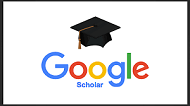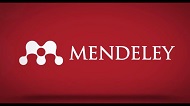- Focus and Scope
- Section Policies
- Open Access Policy
- Publication Ethics
- Article Template
- Author Guidelines
Focus and Scope
Journal for Healthy Communities (JUKMAS) is a scientific journal that presents research results, case reports, scientific works or critical analytical studies in the health sector and articles in the form of reviews. Focus and Scope of the Journal, covering: Health Policy and Management, Nutrition, Nursing, Environmental Health, Epidemiology, Reproductive Health, Health Promotion and Occupational Safety and Health. The Journal for Healthy Communities (JUKMAS) is published twice a year, April and October. The Journal for Healthy Communities (JUKMAS) accepts original research articles and review articles on original literature that have never been published in other media or scientific journals.
Section Policies
Articles
Open Access Policy
This journal provides immediate open access to its content on the principle that making research freely available to the public supports a greater global exchange of knowledge.
Publication Ethics
JUKMAS:JUKMAS: Journal for Healthy Communities is a reviewed journal published by the Research and Community Service Institute at the University of Respati Indonesia. This statement explains the ethical behavior of all parties involved in the process of publishing articles in this journal, including the authors, editor in chief, Editorial Board, reviewers and publishers.
Ethical Guidelines for Journal Publication
The publication of an article in JUKMAS: The reviewed Public Health Journal is an important building block in developing a coherent and recognized knowledge network. This is a direct reflection of the quality of the work of the authors and the institutions that support them. The articles reviewed support and embody the scientific method. Therefore, it is important to agree on expected ethical standards for all parties involved in the act of publishing: author, journal editor, best partner, publisher, and public.
The Institute for Research and Community Service at Respati Indonesia University as the publisher of JUKMAS: The Journal of Public Health takes the task of taking care of all stages of publishing very seriously and we recognize our ethics and other responsibilities. We are committed to ensuring that advertisements, reprints, or other commercial revenues do not influence or influence editorial decisions. In addition, the Research and Community Service Institute of Respati Indonesia University and the Editorial Board will assist in communication with other journals and / or publishers if necessary.
Decision of Publication
JUKMAS Editor: Journal of Public Health is responsible for deciding which articles to publish. The validation of the work and its importance for researchers and readers must always drive that decision. Editors can be guided by the policies of the journal editorial board and are limited by applicable legal provisions, such as defamation, copyright infringement, and plagiarism. The editor can negotiate with other editors or the best partner in making this decision.
Justice aspect
The editor evaluates the manuscript at any time with the author's intellectual content regardless of race, gender, sexual orientation, religious beliefs, ethnicity, nationality, or political views of the author.
Confidentiality
The editor and any editorial staff may not disclose any information about the text sent to anyone other than the author, reviewers, prospective reviewers, other appropriate editorial boards, and publishers, as appropriate.
Disclosure and Conflict of Interest
Unpublished material in the text submitted may not be used in the editor's own research without the written consent of the author.
Review Task
Contribution to Editorial Decisions
Mitra Bestari helps editors make editorial decisions and can help writers improve the quality of manuscripts through the editor.
Speed
Any selected reviewers who feel they do not meet the requirements / interests to review the text or do not have enough time to study must immediately notify the editor and withdraw from the review process.
Confidentiality
Every text received for review must be treated as a confidential document. Manuscripts may not be distributed or discussed with others unless authorized by the editor.
Objectivity Standards
Reviews must be conducted objectively. Personal criticism from the author is not appropriate to convey. Reviewers must express their views clearly with supporting arguments.
Source Recognition
The reviewer must identify the works of the relevant publications which have not been cited by the author. A statement that observations, derivations or arguments previously reported must be accompanied by relevant citations. The reviewer must also state to the editor if there is a substantial similarity or overlap between the text under consideration and other published articles.
Disclosure and Conflict of Interest
Information or ideas obtained during the review process must be kept confidential and not used for personal gain. Reviewers must reject texts that have a conflict of interest due to competition, collaboration, or other relationships and connections with one of the authors, companies, or institutions related to the text.
Fundamental Errors in Work Published
When the writer discovers significant errors or inaccuracies in the published work, it is the author's job to immediately notify the journal editor or publisher and work with the editor to retract or correct the manuscript.
Editorial Board of the Journal of Health Sciences, University of Respati Indonesia (URINDO)
Jl. Bambu Apus I No. 3 Cipayung, East Jakarta.
Email: jukmas@urindo.ac.id; lppm@urindo.ac.id
Article Template
PANDUAN PENULISAN NASKAH
JUKMAS : JURNAL UNTUK MASYARAKAT SEHAT
JUKMAS : Jurnal Untuk Masyarakat Sehat menerima tulisan karya ilmiah original (artikel, tinjauan/review, laporan studi kasus, tinjauan buku, atau hal yang berkaitan dengan kelompok rumpun ilmu kesehatan. Artikel tersebut belum diterbitkan atau dalam proses diajukan untuk dimuat pada suatu jurnal atau majalah lain.
PEER REVIEW ARTIKEL
Artikel yang sudah dikirim ke jurnal akan dilakukan review terkait teknis penulisan dan subtansi dari artikel oleh minimal 2 (dua) orang reviewer.
ORISINALITAS DAN PLAGIARISME
Penulis artikel harus memastikan bahwa naskah yang dikirim adalah karya sendiri dan bebas plagiat. Semua naskah yang akan dipublikasi akan dicek similaritasnya menggunakan software antiplagiarisme.
- 1. Sistematika Penulisan
- Bagian awal : judul (maksimal 20 kata; 14 pt), nama penulis (tanpa gelar), asal instusi/lembaga, email, abstrak (ditulis dalam Bahasa Indonesia dan/atau Bahasa Inggris. Abstrak disusun dengan jumlah kata tidak melebihi 250 kata dengan menggunakan jenis huruf Calibri ukuran 11 pt spasi tunggal. Pada halaman abstrak dicantumkan kata kunci (keywords) minimum 3 kata dan maksimum 9 kata).
- Bagian utama : berisi pendahuluan, kajian literatur dan pengembangan hipotesis (jika ada), cara/metode penelitian, hasil penelitian dan pembahasan, dan kesimpulan dan saran.
- Bagian akhir : ucapan terima kasih, keterangan simbol (jika ada), dan daftar pustaka
- 2. Tata Letak
Naskah ditulis pada kertas A4 dengan format marjin sebagai berikut:
- Marjin atas 2,5 cm
- Marjin bawah 2,0 cm
- Marjin Kiri 2,5 cm
- Marjin Kanan 2,0 cm
Setiap naskah maksimum 10 halaman (termasuk tabel, gambar, dan daftar rujukan) dengan jarak spasi tunggal, jenis huruf Calibri, ukuran 11 pt.
b. Bahasa, Satuan, dan Lambang
Naskah ditulis dalam Bahasa Indonesia baku, lugas dan jelas. Penggunaan satuan dan lambang mengacu pada aturan Standar Nasional dan Satuan Internasional (SI).
Penulisan Persamaan
Persamaan atau rumus ditulis menggunakan software equestion dan diberi nomor, sebagai contoh:
Ω = 2 πr ……………………………. (1)
Penulisan persamaan dalam teks dinyatakan dengan Pers. (1).
Gambar dan Tabel
Gambar dan Tabel dicetak dengan warna hitam-putih. Penulisan gambar dan tabel seperti contoh di bawah ini.
Gambar 1. Keterangan gambar (ditengah bawah) dan Tabel 1. Keterangan Tabel (di tengah atas). Dalam teks ditulis Gbr. 1. dan Tabel 1.
- 3. Daftar Acuan
Daftar acuan ditulis sesuai urutan penunjukkan pada naskah dengan menggunakan Sistem Vancouver (angka dalam kurung siku). Acuan memuat inisial dan nama penulis (anonym), nama jurnal atau nama buku, volume, editor, penerbit, kota, tahun, dan halaman.
Contoh Daftar Acuan:
Paper dalam Jurnal
[1] E. Yusron. Jurnala Makara Sains 10, (2006) 41.
[2] G. Smith. Thin Solid Films (to be published).
Publikasi Elektronik, Informasi Internet
[3] S. Auzary, K.F. Badawi, L. Bimbault. Phys. Rev. Lett. 68 (2008) 2912. Hep-th/9112009.
[4] L. Weiss. Instruction to Authors, Elsevier Publishing, http:/www.elsevier.com/authors.html 1999.
Publikasi Prosiding Konfrensi
[5] C.H. Perry, F. Lu, F. Namavar, N.M. Kalkhoran. Material Res. Soc. Symp. Proc. 256 (2005) 132.
[6] J.J. Favier, D. Camel. Proceedings of the Eight International Conference on Crystal Growth, York, U.K., 2006, p.58.
Monograf, Buku yang diedit
[7] D. Falix [Ed.]. Handbook of Optical Constants of Solid II,3rd Ed., Academic Press, New York, 1991, p.253.
[8] S.M. Sze. The Physics of Semiconductor Device, Wiley, New York, 1981, p. 345.
Skripsi, Tesis, Disertasi
[9] R. Ramos. Ph.D. Thesis, College van Dekanen, University of Twente, Netherland, 1991.
[10] S. Badu. Skripsi Sarjana, Jurusan Kimia FMIPA, Universitas Indonesia, 2008.
Patent
H. Yamagushi, A. Hiroe, H. Nishio. Japan Patent No. 5264701, 23 Nov.1993.
Paper Laporan Industri
[11] R.D. Nicholson. International Structures in Nickel-based Transitions Joints After Long Term Service, Report RD/M/N1131, Central Electricity Generating Board, Marckwood, 2005.
[12] J. Cleveland. Spring Constant Update, Digital Instrument, Santa Barbara, 1987. [Jika ada alamat Website dapat ditambahkan dengan huruf Italic]
Data Khusus [Jika penulis suatu tim atau sinonim]
[13] Joint Committee on Powder Diffraction Standards, Powder Diffraction File, ASTM, Philadelphia, 1967, Card 4301027.
[14] Anonim. 19th Annual Book of ASTM Standards Part 17, ASTM Philadelphia, 1969, p. 457.
Hasil yang tidak dipublikasikan (diacu jika sangat diperlukan)
[15] D.H. Smith. Physics Departement, Chicago University, Chicago, U.S.A., Private Commun, 1966.
[16] R. Stumpf, X. Gonze. Fritz-Haber Institute Research Report, 2006, Unpublished.
- 4. Cara Pengiriman Naskah
Naskah di kirim ke alamat:
Dewan Redaksi Jurnal Bidang Ilmu Kesehatan Universitas Respati Indonesia (URINDO)
Jl. Bambu Apus I No. 3 Cipayung, Jakarta Timur.
Email: jbik@urindo.ac.id; lppm@urindo.ac.id
Pendaftaran dan Submit online: http://ejournal.urindo.ac.id/index.php/jukmas
C.p: 08122504356; 089691155082
Penulis akan menerima pemberitahuan jika naskah diterima dan akan dimuat dalam jurnal dalam bentuk surat keterangan tanda terima naskah (acceptance letter). Setelah mendapatkan surat keterangan tersebut penulis wajib melakukan pembayaran sejumlah Rp 400.000,00 melalui rekening BNI: No. 1020519402.
JUKMAS : Jurnal Untuk Masyarakat Sehat
eISSN 2175-7687
Terbit 2 (dua) kali setiap tahun
(April dan Oktober)
JUDUL ARTIKEL (tidak lebih dari 20 kata, menggunakan huruf Capital Each Word, 14 pt, bold, center), ditulis dalam bahasa Indonesia
Penulis Utama1, Penulis Pendamping 1, dan Penulis Pendamping 2(11pt)
1posisi penulis pada institusi pendukung pertama (11pt)
2posisi penulis pada institusi pendukung kedua, jika ada (11pt)
alamat email penulis utama (11pt)
Abstrak (maksimum 250 kata)
..................................................................................................................................................
..................................................................................................................................................
..................................................................................................................................................
Kata kunci: ................................................................................. (3-9 kata; calibri 11 pt)
Abstract
..................................................................................................................................................
..................................................................................................................................................
..................................................................................................................................................
..................................................................................................................................................
..................................................................................................................................................
..................................................................................................................................................
Keywords : 3-9 keywords in English (11 pt, italics)
PENDAHULUAN (11 pt, bold)
Paper ditulis dengan Calibri, ukuran 11 dan dalam format dokumen berukuran A4 (210mm x 297mm) dengan margin atas 2,5 cm, bawah: 2cm, kiri 2,5 cm dan kanan:2 cm, rata kanan – kiri. Isi dokumen, sudah termasuk tabel, grafik, gambar tidak boleh lebih dari 10 halaman. Judul harus singkat, informatif dan tidak lebih dari 20 kata. Artikel dibuat menjadi dua kolom.
Pendahuluan berisi latar belakang mengapa penelitian itu dilakukan, perumusan masalah, tinjauan pustaka dan keterangan – keterangan terkait dengan tulisan. Adapun bagian dari pendahuluan adalah latar belakang, rumusan masalah, tujuan penelitian dan manfaat penelitian
METODE
Berisi desain penelitian, uraian cara – cara pelaksanaan penelitian mencakup populasi dan sampel, Instrumen dan cara pengumpulan data, teknik analisis data. Hasil menyajikan karakteristik data dan temuan – temuan penelitian.
Hasil dan Pembahasan
Hasil penelitian memuat pernyataan singkat tentang hasil penelitian. Sedangkan pembahasan berisi diskusi yang menghubungkan dan membandingkan hasil penelitian dengan teori dan hasil penelitian sebelumnya.
KUTIPAN: Penulisan kutipan dengan menyebutkan sumbernya yaitu dengan menuliskan nama akhir penulis disertai tahun terbit buku. Kutipan dapat dilakukan dengan cara langsung, meringkas.
TABEL: Judul tabel ditulis dengan ukuran 11, cetak tebal. Seperti contoh di bawah ini. Penomoran nama tabel dengan menggunakan nomor arab. Diantara judul tabel dan tabel tidak diberi spasi. Isi tabel ditulis dengan huruf Calibri ukuran 11, dan dengan format 1 spasi. Sedangkan Judul Gambar diletakkan dibawah gambar dengan format seperti judul tabel.
Tabel 2. Analisis Karakteristik Responden
RT | Perilaku Hidup Bersih dan Sehat | |
Ber PHBS | Tidak Ber PHBS | |
1 | 45 | 76 |
2 | 17 | 23 |
3 | 12 | 23 |
4 | 47 | 30 |
5 | 24 | 16 |
6 | 12 | 18 |
Total | 157 | 186 |
Sumber : Profil Puskesmas
Kecamatan Pasar Rebo
Gambar 1. Kurva Ketahanan Hidup ODHA dengan
Kepatuhan Pengobatan.
KESIMPULAN DAN SARAN
Bagian penutup terdiri dari Kesimpulan dan Saran berdasarkan hasil penelitian
PENUTUP (JIKA ADA)
Berisi pengakuan atau ucapan terimakasih kepada pihak-pihak yang berperan dan terlibat dalam pelaksanaan penelitian/penulisan artikel (donor/sponsor), baik material maupun fasilitas-fasilitas lainnya.
DAFTAR PUSTAKA (11 pt, bold)
Semua artikel yang dirujuk ditulis dalam Daftar Pustaka dengan ketentuan (Sistem Vancouver) sebagai berikut : Jarak spasi yang digunakan 1 spasi, baris ke dua tiap artikel dimulai menjorok ke dalam dengan 6 ketukan. Jarak antar artikel sebesar 1 spasi. Urutan Penulisan Artikel berdasarkan nomor. Nama Pengarang ditulis tanpa gelar, dimulai dari nama belakang (nama famili) ditulis lengkap diikuti nama depannya ditulis singkatannya dan tidak perlu diurutkan berdasarkan Alfabetis. Tidak perlu mengurutkan tahun publikasi tulisan. Penggunaan daftar pustaka 10 tahun terakhir untuk referensi yang berasal dari buku dan 5 tahun terakhir untuk jurnal.
(hanya ditulis sesuai dengan sitasi yang tercantum dalam naskah publikasi saja)
Direkomendasikan menggunakan Aplikasi Reference Manajemen Tool seperti Mendeley dan yang lainnya.
Author Guidelines
JUKMAS: JUKMAS: Journal for Healthy Communities in the form of research results, concepts of thought or creative and innovative ideas that are useful to support the advancement of science, education and information technology. The research paper must be prepared in accordance with the following systematic:
The title, describing the main content of the article in a concise and clear manner, is written in Indonesian and English. The title of the article in Indonesian is printed in capital letters using the Calibri 11 font. The English title is italicized and each word is typed in capital letters.
Author's name, no title. The number of authors listed in the article is at least 1 person, if the author consists of 4 or more people, listed under the article title.
Address In the form of an agent where the author works or a personal address that is equipped with an email address (for correspondence authors).
Abstract, written in Indonesian and English and is the core of all writing, including: problems, objectives, methods, results and conclusions (IMRAD: Introduction, Methods, Results, and Discussion). Abstracts are written in full sentences of up to 250 words. Below the abstract are 3-5 keywords
The introduction covers background issues, no more than 2 pages.
Materials and Methods, contains an explanation of the design, population, samples, variables, materials and tools used, time and place
The results are clearly stated in the form of narration and the data entered is related to the purpose of the study, if necessary accompanied by pictures, graphs or diagrams. Each table is accompanied by a brief explanation and does not repeat data that can be read in the table.
Discussion, explaining the meaning of research results which include: facts, theories and opinions.
Conclusions and suggestions, in the form of conclusions from the results of research in the form of narratives that refer to the objectives of the study. Suggestions contain suggestions that can be given by the writer based on the results of the study.
Quotations, references, and quotations use the attached reference technique (name, year).
Literature, sources of reference (literature) as far as possible because the literature published in the last 10 years is the result of research reports and scientific articles. Literature is organized according to the Harvard System.
Submissions are submitted via the Website http://ejournal.urindo.ac.id/index.php/MARSI
Text sent is typed on HVS paper with MS Word program, A4 paper size (210X297 mm) with a distance of 1 space, font 11 Calibri, paper border 3 cm from the left edge of 2.5 cm and below the left 2.5 cm and below , right and top edge.
Delivery process
The author clicks on the "Register" button to register. Then the writer is taken to the online form filling page. After completing the form, click the register button at the bottom, the author will be taken to the next page where the author must click the "Make New Submission" button. After that the author will be taken to the article submission page through the following 5 steps:
Step 1 (start) the author marks all the list of Submission Requirements after completing the save click and continue.
Step 2 (upload post) the author uploads the file by clicking upload file-select the article component-select the article text and upload the file to be sent. When finished, click continue, click finish, and click save and continue.
Step 3 (enter metadata) the author fills in the article title, abstract, keywords and references after finishing click save and continue.
Step 4 (confirm) click finish sending then click ok.
Step 5 (the next step) until this stage the author successfully uploaded the file to be sent to the journal editor. After that the author will receive a confirmation email about the shipment and will be able to see the progress of the shipment through the editorial process by going to the journal address website using the username and password previously created.

.pdf_2.png)













